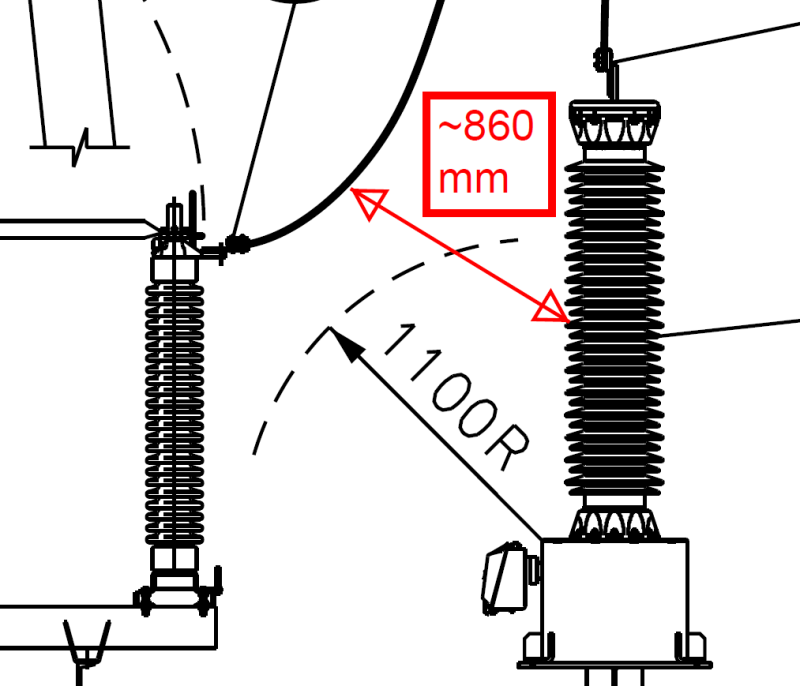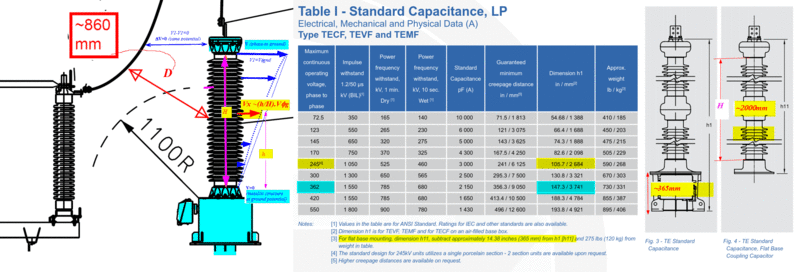basilasq1
Electrical
- Jun 11, 2014
- 18
Hi Everyone,
Our utility clients usually specify a minimum phase to ground clearances for high voltage (>69kV) substations. While we always meet those requirements, what potential issues would you all see in the following arrangement:
A live wire jumper is connected in such a way that it meets the min. clearance to ground for the grounded parts of the HV equipment (CVT) but is much closer to the middle of the CVT insulator (min ph-ground clearance is considered as 1100mm for 138kV system). Refer to the following pic for details:

My questions are:
Will this increase stresses on the insulator and degrade long-term performance?
Will the problem be exacerbated for higher voltage levels (240, 345kV)?
Thanks for you feedback.
Our utility clients usually specify a minimum phase to ground clearances for high voltage (>69kV) substations. While we always meet those requirements, what potential issues would you all see in the following arrangement:
A live wire jumper is connected in such a way that it meets the min. clearance to ground for the grounded parts of the HV equipment (CVT) but is much closer to the middle of the CVT insulator (min ph-ground clearance is considered as 1100mm for 138kV system). Refer to the following pic for details:

My questions are:
Will this increase stresses on the insulator and degrade long-term performance?
Will the problem be exacerbated for higher voltage levels (240, 345kV)?
Thanks for you feedback.

